Coney Island, New York
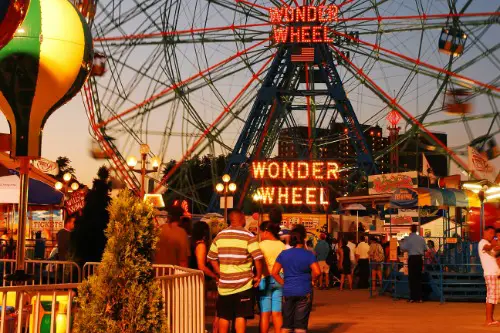
Coney Island once ruled the summer beach scene, attracting throngs of vacationers to its iconic boardwalk and amusement parks. In the early 20th century, it was home to the world-famous Luna Park, where visitors enjoyed thrilling rides and games. The area also boasted the first hot dog stand in America, which became an instant classic and is still popular today. But over the decades, as new attractions and other beach destinations gained popularity, Coney Island’s star began to fade.
Despite the decline, Coney Island still holds a special place in the hearts of New Yorkers. Its famous Cyclone roller coaster and Nathan’s Hot Dog Eating Contest keep it relevant, drawing crowds every summer. But for much of the country, it’s no longer the first beach destination that comes to mind. Coney Island’s heyday may be over, but its nostalgic charm still lingers.
Atlantic City, New Jersey
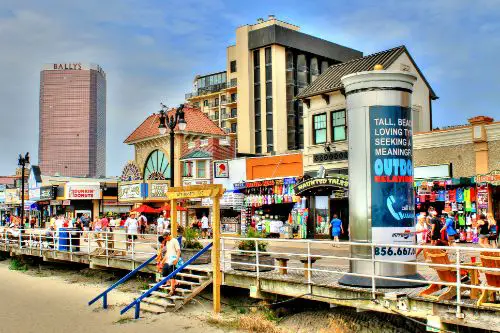
Atlantic City was once the crown jewel of the East Coast, drawing affluent vacationers from around the country. During the early 20th century, it became known for its glitzy boardwalk, luxury hotels, and thriving casinos. It was a place where Hollywood stars mingled with wealthy socialites, creating an atmosphere of glamour and excitement. The 1920s saw Atlantic City become synonymous with the roaring twenties’ glitz and glam, setting the standard for luxury beach resorts.
However, in the later half of the 20th century, Atlantic City began to lose some of its shine. Competition from other beach towns and the rise of Las Vegas as the go-to gambling destination took a toll. Today, it’s still a popular spot, especially with its casinos, but it’s not quite the powerhouse it once was. Atlantic City’s golden era may be over, but it remains an enduring symbol of East Coast beach culture.
Asbury Park, New Jersey
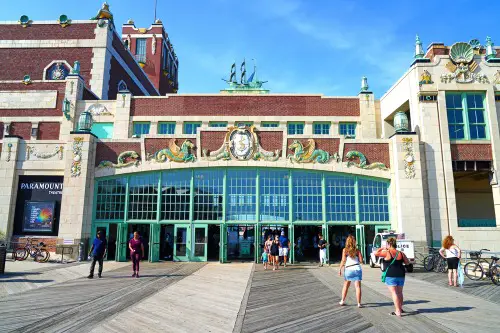
Asbury Park was once a symbol of beach town chic in the 20th century, with its vibrant boardwalk, art-deco architecture, and lively music scene. In the 1960s, the town became known as a haven for counterculture, drawing musicians and artists from across the country. It was also home to the famous Convention Hall, where big-name artists like Bruce Springsteen performed in the early days of their careers. This gave the town a reputation as a cultural hotspot along the Jersey Shore.
However, by the 1980s, Asbury Park’s popularity waned as economic decline and urban decay hit the town. It became a shadow of its former self, with abandoned buildings and a less glamorous reputation. Over the past few decades, though, Asbury Park has undergone a revitalization, with trendy restaurants, boutique shops, and a resurgence in its music scene. It’s still a top destination today, but it’s far from the cultural capital it once was.
Cape May, New Jersey
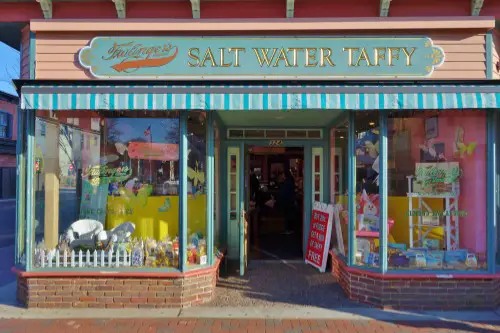
Cape May, known for its Victorian-era charm, was once a go-to summer destination for wealthy vacationers in the 19th and early 20th centuries. Located at the southern tip of New Jersey, the town became famous for its grand, picturesque resorts, and as a getaway for affluent families. The beach here was pristine, and visitors could enjoy leisurely strolls down its tree-lined streets, which were filled with beautifully restored Victorian homes. Cape May was the ultimate in class and sophistication, attracting those looking for a refined escape.
Over time, the allure of newer, more modern beach destinations led to a decline in Cape May’s popularity. The town never completely fell out of favor, but it was no longer the centerpiece of American beach vacations. Today, Cape May remains an attractive spot, largely because of its preservation efforts, but it doesn’t hold the same level of national attention it once did. Cape May’s quiet elegance keeps it alive, but its heyday as a symbol of summer luxury is a thing of the past.
Ocean City, Maryland
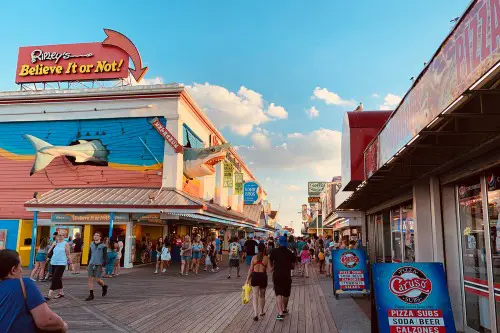
Ocean City, Maryland, used to be one of the most popular family-friendly beach destinations on the East Coast. In the 1960s and 1970s, its bustling boardwalk, famous for its saltwater taffy and amusement rides, attracted vacationers from all over the country. The town offered a perfect blend of fun and relaxation, with activities for all ages, making it the ideal summer escape for families. It became the spot for sunbathing, carnival games, and enjoying freshly caught seafood by the beach.
However, as newer, more modern beach destinations sprang up, Ocean City began to see its charm waning. Many families sought out destinations with newer attractions or quieter, more exclusive vibes. Today, Ocean City still enjoys popularity, but it no longer enjoys the same status as the beach town of choice. While it continues to draw crowds, it’s no longer the crown jewel it once was.
Montauk, New York
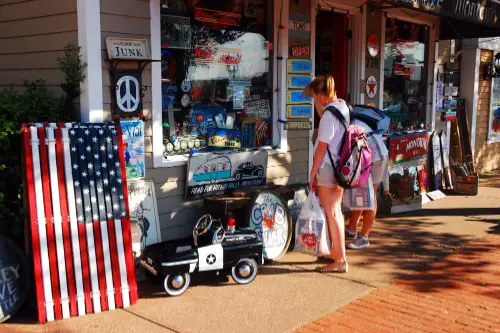
Montauk, often referred to as “The End” because it sits at the easternmost point of Long Island, was once the summer getaway for the elite. In the 1950s and 1960s, the town was a favorite retreat for celebrities, artists, and writers, offering a blend of rugged natural beauty and luxurious accommodations. The beaches were pristine, and the nightlife was sophisticated, making Montauk the go-to place for those wanting to escape the hustle and bustle of city life. Its stunning lighthouse and serene landscapes added to its allure as an exclusive hideaway.
However, as New York City expanded and more people discovered Montauk, it began to lose its exclusivity. In the 1980s and 1990s, mass tourism took a toll, with crowds flocking to the town, many of whom were more interested in partying than in relaxation. Today, Montauk is still a popular destination but is known more for its trendy atmosphere and luxury accommodations rather than its earlier reputation as a retreat for the rich and famous. While it retains much of its charm, it’s not the hidden gem it once was.
Rehoboth Beach, Delaware
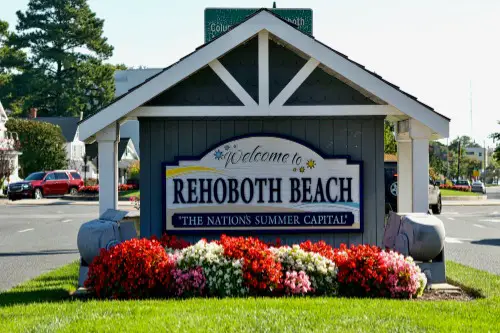
Rehoboth Beach was once known for its pristine shores and charming boardwalk, making it a beloved destination for families looking for a more laid-back beach experience. In the 1950s and 1960s, it became the perfect spot for vacationers escaping to a quieter beach than those on the Jersey Shore. The town was small but offered a perfect mix of beach activities, shopping, and dining. Rehoboth was often referred to as the “Nation’s Summer Capital” due to its popularity with Washington D.C. residents.
By the 1980s, however, Rehoboth’s once tranquil vibe started to shift. Tourism began to increase, and the once quaint town became a bit more commercialized, losing some of its previous charm. While it’s still a top destination for East Coast families, the pace of life and the overall atmosphere have changed significantly. Rehoboth Beach still offers a great getaway, but it no longer carries the same sense of exclusivity and small-town beach appeal.
Virginia Beach, Virginia

Virginia Beach was a top vacation spot for American families in the mid-20th century. The city’s wide, sandy beaches and lively boardwalk created the ideal summer escape for families looking for fun and sun. It was also known for its relaxed vibe, with beachfront hotels and fresh seafood at nearly every corner. By the 1960s, Virginia Beach was a cultural hub, hosting music festivals and a range of entertainment that made it a summer favorite.
However, by the late 1980s and early 1990s, Virginia Beach became overdeveloped, with a focus on large resorts and chain hotels. The town started to feel a bit too commercial and crowded, losing some of its appeal to travelers seeking a more laid-back experience. Today, Virginia Beach still attracts tourists, but it no longer stands out as it once did among East Coast beach towns. Its large-scale tourist offerings don’t quite match the intimacy it had in its prime.
Daytona Beach, Florida
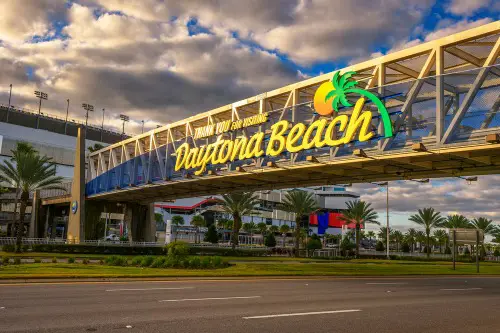
Daytona Beach was once the definition of sun and fun in the South, attracting vacationers with its expansive beaches and lively boardwalk. In the 1960s, Daytona was a hotspot for spring breakers and families alike, offering a place to drive right onto the beach and enjoy the sun and sand. It was also home to the Daytona 500, cementing its place as a true American favorite. The beach was lined with hotels, arcades, and endless attractions, making it a vacation destination for all ages.
However, as the years went by, Daytona Beach became overshadowed by other Florida beach towns like Miami and Key West. The appeal of driving directly onto the beach wore off for many travelers, and the area began to feel a bit dated. Today, Daytona Beach still draws visitors, especially for racing events, but it no longer holds the widespread popularity it once had. Daytona’s heyday may be a thing of the past, but its legacy as a beach town icon endures.
Myrtle Beach, South Carolina

Myrtle Beach in the 1950s and 1960s was the quintessential American beach getaway, offering a mix of relaxation and entertainment that attracted visitors from all over the country. Its wide beaches and family-friendly attractions made it a go-to summer destination for families looking for affordable fun. The town was known for its lively boardwalk, miniature golf courses, and thriving local culture. Myrtle Beach epitomized the all-American beach experience, making it an essential summer stop.
As the years went on, Myrtle Beach began to lose some of its charm due to heavy commercialization. It became overdeveloped, with large resorts and chain restaurants filling the space where smaller, local businesses used to thrive. While still a bustling tourist hub, it no longer offers the quaint, quieter atmosphere that made it so appealing. Myrtle Beach still draws visitors, but it’s not quite the nostalgic beach destination it once was.
Wildwood, New Jersey
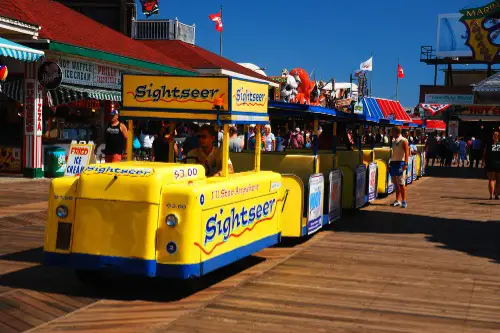
Wildwood was the epitome of a 1960s beach town, complete with its colorful motels, lively boardwalk, and amusement rides. This town attracted summer visitors who were looking for a fun-filled, affordable vacation along the Jersey Shore. Known for its nostalgic 1950s and 1960s vibe, Wildwood was a hot spot for families, attracting huge crowds throughout the summer. The beach was the backdrop for endless fun, from ice cream cones to classic arcade games, making it the quintessential beach escape.
However, by the 1980s, Wildwood’s reputation began to take a hit. The once-vibrant boardwalk became a little worn down, and the motels started to lose their shine. Today, Wildwood has seen some revitalization, but it’s no longer the bustling summer destination it once was. Though the town still holds on to its vintage charm, it no longer has the same cultural significance or popularity it had in its prime.


